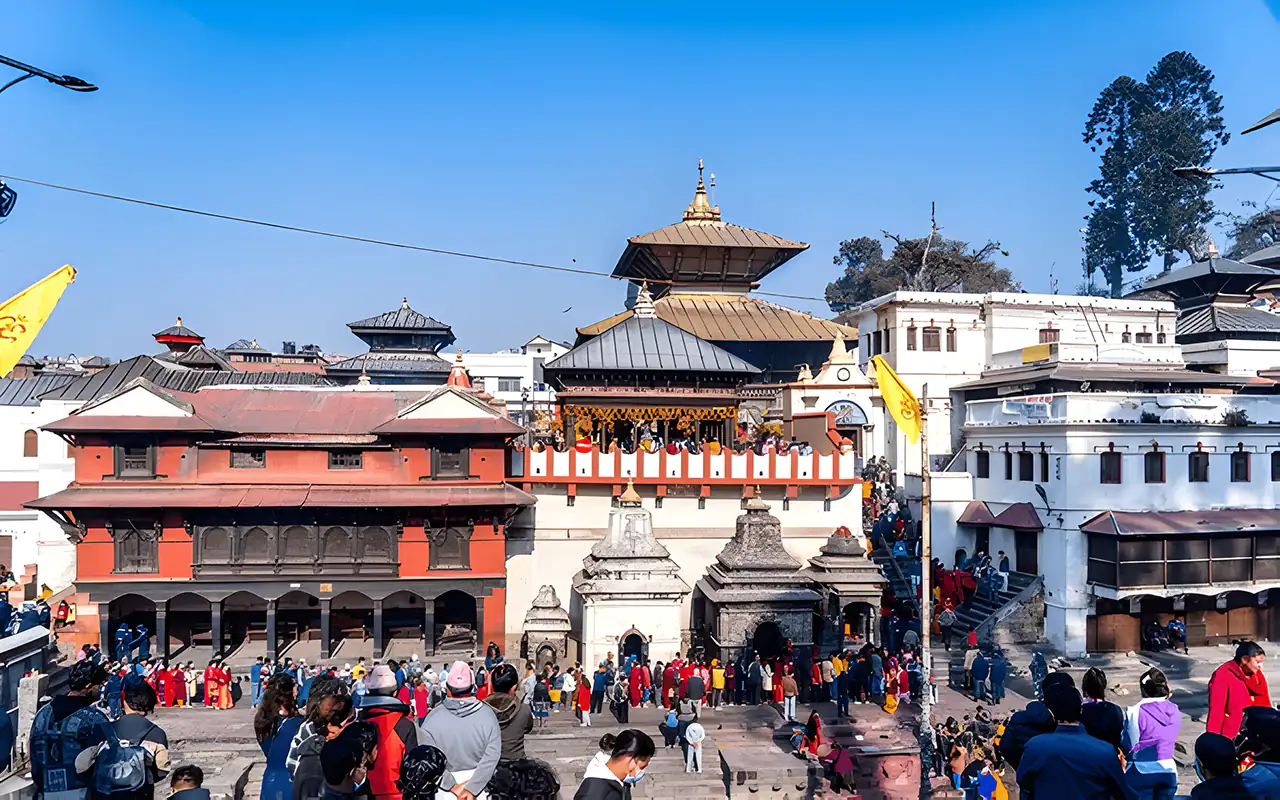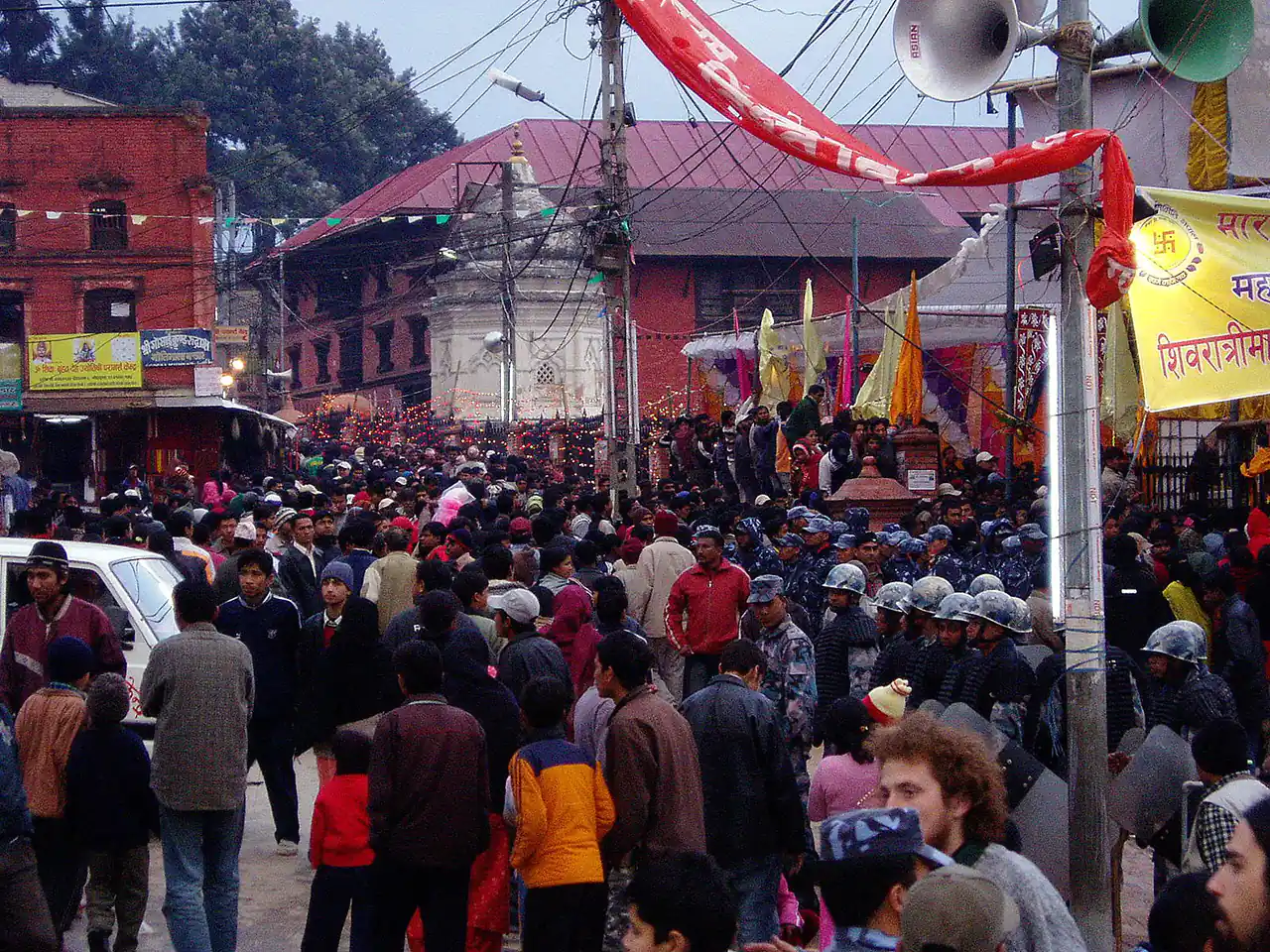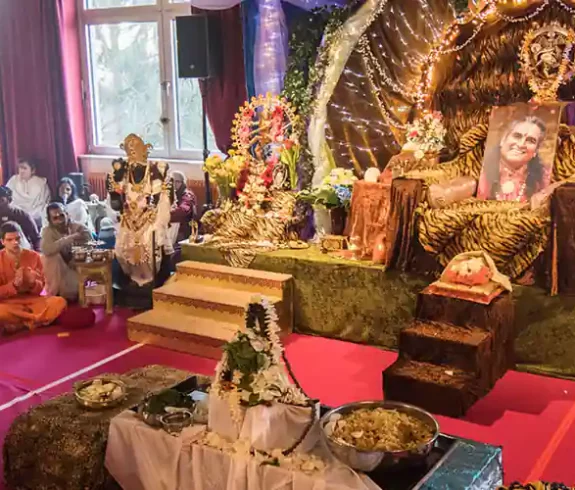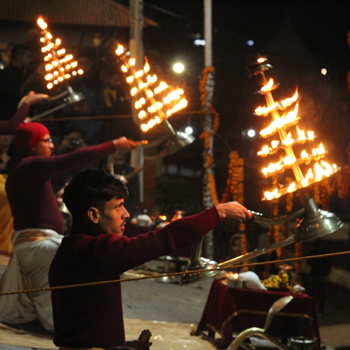25 Feb Update
In 2025, Hindus worldwide will once again celebrate Maha Shivratri, and Nepal will be at the heart of these powerful observances. If you’re seeking a genuinely unforgettable spiritual experience in the coming year, plan to witness Maha Shivratri at Pashupatinath Temple in Kathmandu. Let’s delve into why this festival is so significant and why Pashupatinath is the place for these vibrant celebrations.
What to Expect at Maha Shivratri 2025: Honoring Lord Shiva
Maha Shivratri, “The Great Night of Shiva,” is an essential Hindu calendar date dedicated to Lord Shiva. As this annual Hindu festival approaches in 2025, devotees prepare for a night of deep devotion, fasting, and spiritual reflection. Observing Maha Shivratri is believed to help individuals transcend darkness and ignorance, leading to enlightenment and the blessings of Lord Shiva. Millions will seek this spiritual upliftment during Maha Shivratri.
Pashupatinath Temple: Nepal’s Grand Stage for Maha Shivratri 2025
Pashupatinath Temple in Kathmandu is again set to become Nepal’s epicenter of Maha Shivratri celebrations. This ancient and revered shrine, dedicated to Lord Shiva as Pashupati, is globally recognized as one of the holiest Hindu sites. In 2025, as in every year, Pashupatinath will transform into a breathtaking spectacle of faith, drawing vast devotees and pilgrims eager to participate in this sacred night.
Be Part of the Devotion: Experiencing Pashupatinath
Imagine witnessing this in 2025: From early morning on Maha Shivratri, long lines of devotees dressed in their finest attire will form around the Pashupatinath complex. People from Nepal, India, and many other countries will converge here to offer heartfelt prayers to Lord Pashupatinath, the compassionate “Lord of Animals.” The air around Pashupatinath will hum with spiritual anticipation, creating an atmosphere unlike any other.
As night falls on Maha Shivratri, Pashupatinath Temple will become even more captivating. The temple grounds will resonate with the sacred sounds of chants, timeless hymns, and the entrancing melodies of traditional Nepali music. Throughout the night, the temple’s learned priests will conduct elaborate rituals and pujas, meticulously following ancient traditions passed down through generations. The temple area will be bathed in the warm glow of countless oil lamps, a truly magical and profoundly moving sight to witness during Maha Shivratri. Many devotees will observe a rigorous day-long fast, their spiritual discipline culminating in participation in the powerful midnight prayers at Pashupatinath.
Maha Shivratri Celebrations across Nepal
While Pashupatinath Temple will undoubtedly be the main draw, the spirit of Maha Shivratri will be felt throughout Nepal. Numerous Shiva temples across the country, from bustling cities to remote villages, will become active centers of worship and celebration. Families will gather to perform meaningful rituals and offer prayers together in their local temples. Communities will come together to organize festive celebrations, often including the lighting of bonfires – ancient symbols representing the triumph of good over evil as Maha Shivratri is observed. Staying awake throughout the night, engaging in devotional singing, and sharing revered stories of Lord Shiva will be standard practices across Nepal, fostering a strong sense of shared spirituality.
Plan Your Visit: A Spiritual Journey to Nepal
For travelers planning to be in Nepal during Maha Shivratri 2025, a pilgrimage to Pashupatinath Temple promises an extraordinary and profoundly enriching experience. It offers a unique window into the vibrant living culture and profound faith of Hinduism within Nepal. Whether you are a devout follower seeking a spiritual connection, a cultural enthusiast eager to witness ancient traditions, or simply a traveler curious to experience a significant Hindu festival in Nepal, Maha Shivratri at Pashupatinath will undoubtedly leave an indelible mark on your soul. Start planning your spiritual journey to Nepal for Maha Shivratri today, and prepare to be moved by the devotion and beauty of this sacred night.
Mahashivratri, also known as Shivaratri or the ‘Great Night of Shiva,’ is among the most significant Hindu holidays celebrated yearly. It’s a grand occasion in memory of Lord Shiva, who holds the position of ‘Destroyer’ and ‘Transformer’ within the Hindu triumvirate. This festival represents a converging immense cosmic power that allows worshippers to enhance their spirituality through deep self-reflection.
The Significance of Mahashivratri
- Celebrating the Cosmic Dance: This festival commemorates Lord Shiva’s divine dance, the Tandava, which symbolizes the cycle of creation, preservation, and dissolution.
- Union of Shiva and Shakti: This auspicious night also marks the celestial wedding of Lord Shiva and Goddess Parvati, representing the union of masculine and feminine energies.
- Overcoming Darkness and Ignorance: Devotees observe Mahashivratri to seek blessings for overcoming darkness, ignorance, and negativity.

Celebrating Mahashivratri: Unveiling Its Historical and Mythological Roots
Mahashivratri, or simply Shiva Ratri, often called “The Great Night of Shiva,” is one of today’s most ancient festivals. It connects us with legends and stories passed down through the ages, illuminating its spiritual significance by revealing the divine saga intertwined with Shiva’s existence.
Mythological Narratives That Enrich Mahashivratri
- The Divine Union of Shiva and Parvati: Among the most acclaimed folktales connected with this festival are Lord Shiva’s heavenly wedding and the subtle goddess Parvati. That coupling is not simply a romantic fable; it represents a fine blend of manly and feminine powers (Purusha and Prakriti), without which there would have been no balance nor conservation of cosmic life. In other words, this union implies that two contradicting forces, when put together, present something more prominent than all they are individually.
- Samudra Manthan: The Churning of the Ocean: This epic saga, deeply rooted in Indian mythology, narrates a time when gods (Devas) and demons (Asuras) worked together to churn the cosmic ocean in their search for the nectar of immortality (Amrit). However, during this significant undertaking, a deadly poison called Halahal emerged, threatening to destroy everything. In an extraordinary act of kindness and self-sacrifice, Lord Shiva drank down the poison, saving the universe, but being named after his blue throat – ‘Neelkanth.’ For many people, Shiva Ratri commemorates the unparalleled selflessness of Lord Shiva as he protects all creations.
Historical Significance of Mahashivratri
The observance of this festival transcends the realm of mythology; it holds a significant place in history. Its roots stretch back centuries, with ancient texts and scriptures like the Puranas and the Shiva Purana providing detailed accounts of its rituals and profound importance. The festival has evolved, gracefully adapting to different cultures and traditions, yet its essence, the unwavering devotion to Lord Shiva, remains unchanged.
The Spiritual Significance of Mahashivratri
Mahashivratri is a significant Hindu festival and a time of deep spiritual significance, providing a unique opportunity for personal growth and enlightenment. Celebrated with faith and devotion to Lord Shiva, this holy event symbolizes victory over darkness and ignorance. Here is an in-depth analysis of why this festival holds such deep spiritual significance and how it can catalyze spiritual awakening.
Why Mahashivratri Ignites Spiritual Growth
- A Surge of Cosmic Energy: Many believe that the alignment of stars and planets during this sacred evening produces powerful currents of divine power. The massive energy waves associated with such occurrences make this time perfect for meditation, prayer, and other activities. These amplified vibrations deepen our connection with our Maker, speeding up our spiritual tour.
- Conquering Inner Demons: This festival signifies the triumph of brightness over ignorance and cognition. Therefore, while holding these festivities, we need to meet up with those evil spirits, conviction inaccuracies, damaging tendencies, and auto-Hitlerism. The festival’s core is about self-reflection and purification, encouraging us to leave behind our shortcomings and become more promising people.
- Connecting with the Divine: The intense devotion and focus on Lord Shiva during this festival create a profound connection with the divine. This connection can lead to inner peace, clarity, and spiritual enlightenment. Devotees seek blessings for overcoming obstacles, gaining wisdom, and experiencing a profound oneness with the universe.
Symbolism: Overcoming Darkness and Ignorance Through Shiva
- Lord Shiva as the Destroyer: Lord Shiva, often depicted as the ‘Destroyer,’ represents the dissolution of negativity and ignorance, paving the way for fresh starts. Just as the sun dispels darkness, this festival encourages us to dispel our inner darkness, creating space for positive change.
- The Linga: On this festival, we worship the Linga, a sacred symbol representing Lord Shiva. It symbolizes the divine’s formless, all-pervading nature. By focusing on the Linga, we transcend the limitations of the material world and connect with the eternal truth that lies beyond.
- The Night-long Vigil (Jagran): The tradition of staying awake throughout the night of this festival carries deep symbolism. It represents the vigilance needed to overcome the darkness of ignorance and negativity in our lives. It reminds us that spiritual growth demands constant awareness and effort.

Mahashivratri Celebrations: Traditions, Rituals, and Community Involvement
Mahashivratri, a prominent festival dedicated to Lord Shiva, holds special significance for countless devotees. This night involves intense spiritual practices and rituals aimed at honoring Shiva, the deity known for destroying evil and representing cosmic energy. Below is a look into the traditions, rituals, and community activities that make this festival a spiritually enriching experience.
Rituals and Traditions of Mahashivratri
On Mahashivratri, devotees perform rituals to strengthen their bond with Lord Shiva. These time-honored practices, handed down from generation to generation, carry deep spiritual meanings.
- Fasting: Devotees observe fasting as a critical part of this festival. Some follow a strict fast, refraining from food and water, while others consume only fruits and milk. Fasting symbolizes cleansing the body and mind, allowing devotees to concentrate on their spiritual practices.
- Night Vigil (Jagaran): Staying awake throughout the night is another crucial tradition in this festival. This night vigil, Jagaran, involves meditation and constant focus on Shiva. Many spend the night in temples or at home, chanting mantras and singing devotional songs to stay engaged in worship.
- Ceremonial Offerings (Abhishekam): A significant ritual of this festival includes performing Abhishekam, which involves bathing the Shiva Linga with offerings like milk, honey, and water. Reciting sacred mantras while pouring these offerings symbolizes cleansing the soul and seeking Shiva’s blessings. Devotees often perform these rituals multiple times at night, using various items such as yogurt, ghee, and sugarcane juice.
- Chanting and Meditation: Chanting mantras and hymns dedicated to Shiva is another essential aspect of this festival celebration. Reciting “Om Namah Shivaya” is believed to purify the surroundings and elevate spiritual energy. Meditating on this sacred night helps devotees connect with Shiva’s divine power and achieve mental clarity.
Community Gatherings and Temple Celebrations
Mahashivratri also brings people together for collective worship. Temples worldwide have become centers of devotion and celebration, where devotees gather to honor Shiva.
- Temple Gatherings: Temples dedicated to Shiva receive unique decorations and host rituals on this festival. Devotees gather to offer prayers, participate in Abhishekam, and engage in religious discourses. The temple atmosphere is filled with devotion, with the sounds of bells, chanting, and the scent of incense, creating a spiritually charged environment.
- Special Prayers and Recitations: Temples are known for hosting special prayers all night during this festival. The prayers usually consist of reading holy scriptures like the Shiva Purana texts alongside hymns praising Lord Shiva. Drumming, tinkling cymbals, and other musical instruments create an aura that gives devotees a spiritual high.
- Devotional Songs and Chants: Singing devotional songs, or bhajans, is crucial to the Mahashivratri celebration. Groups of devotees gather in temples and other community spaces to sing bhajans dedicated to Shiva. The singing continues through the night, with the collective chanting of “Om Namah Shivaya,” enhancing the spiritual energy of the celebration.
Making the Most of Mahashivratri Celebrations
To fully engage in Mahashivratri celebrations, consider these practical tips:
- Plan Your Fast: Decide whether to observe a full or partial fast and prepare beforehand. If you follow a partial fast, prepare fruits, milk, and other suitable items.
- Join Temple Gatherings: Visit a nearby Shiva temple to participate in the community celebration. Participate in the rituals and absorb the spiritual energy of the space.
- Create a Sacred Space at Home: If you’re celebrating at home, set up a small altar with a Shiva Linga or an image of Shiva. Perform Abhishekam and recite mantras to invoke Shiva’s presence.
- Stay Awake and Meditate: Make an effort to stay awake throughout the night and meditate on Shiva’s qualities. Use this time for self-reflection and spiritual growth.
Exploring Regional Variations in Mahashivratri Celebrations
Mahashivratri is a highly revered Hindu event welcomed with great enthusiasm in different parts of India and other nations, with a remarkable number of Hindus. However, even though every place pays homage to Shiva, local day-to-day activities contribute to variations in individual places’ rituals. Consequently, the paper highlights specific festival customs that reinforce their diversity.
Observing Mahashivratri Across India
- Northern India, States like Uttarakhand and Himachal Pradesh, where Shiva holds prime religious importance, celebrate this festival with grand temple festivities. Devotees gather in large numbers at prominent Shiva temples such as Neelkanth, engaging in night-long vigils filled with regional folk music and dance. These temples also host grand processions where idols of the deity travel on chariots or palanquins, all amidst an ambiance enriched with music and chants.
- Southern India: The Southern states, including Tamil Nadu and Karnataka, strongly emphasize cultural performances such as classical dance and music during this festival. At the Brihadeeswarar Temple in Thanjavur and similar sites, thousands of devotees perform ritualistic dances and chant hymns to praise Shiva. The offering of bilva leaves and celebration through classical arts mark the devotion unique to this region.
- Western India, Gujarat, and Maharashtra celebrate this festival with a unique tradition known as ‘Jagar,’ which involves communities gathering to sing devotional songs through the night. Temples in these regions organize fairs and spiritual talks, attracting large crowds who partake in fasting and meditation. Children and families also enjoy unique puppet shows that depict tales of Shiva.
- Eastern India: Shiva Shakti is worshiped in West Bengal and Odisha on this festival, highlighting the divine union between male and female energies. Residents place clay images of Lord Shiva in houses and temples for worship. They also prepare special foods as a unique regional custom, which they share as ‘offerings’ with the local community.
Global Celebrations of Mahashivratri
- Nepal: The Pashupatinath Temple hosts one of the largest Mahashivratri gatherings, drawing devotees from various countries. The grand celebrations feature special rituals, performances by sadhus, and a vibrant fair that attracts thousands of visitors.
- Mauritius: With a notable Hindu population, Mauritius observes this festival with intense devotion. Pilgrims travel to the sacred Lake Ganga Talao, offering prayers and floating lamps on the water, paying homage to Shiva. The celebration concludes with cultural programs and community feasts.
- Indonesia (Bali): Bali, where Hinduism is the predominant religion, marks this festival primarily with meditation and silence. Here, the emphasis is on self-reflection and spiritual cleansing; people decorate temples to honor the day. Yet the observance remains introspective rather than outwardly festive.

The Cultural Impact of Mahashivratri: Arts, Music, Dance, and Economic Growth
Mahashivratri can be considered an important festival in the Hindu calendar. It influences several cultural aspects, such as art, music, dance, and local economies, especially in areas where people celebrate it with great devotion. This festival is dedicated to Lord Shiva, bringing life to many cultural practices while encouraging people’s participation and tourism, which are suitable for the economy. So, let us see how this festival fulfills these parts and why it is essential to maintain these civilizations.
Revitalizing Art and Craft Traditions
This festival sparks a significant increase in artistic activities, especially in the creation of religious paraphernalia. Artisans and craftsmen see a surge in demand for:
- Statues and Idols: During the festival, artisans specializing in clay and metal statues of Lord Shiva experience a rise in demand.
- Decorative Items: Producers of items for decorating temples and homes, such as flowers, lamps, and rangoli materials, see their products sold in increased quantities.
- Religious Artifacts: The production of rudraksha beads, prayer beads, and other sacred artifacts also escalates, supporting local artisans and small businesses.
Enhancing Music and Dance
Mahashivratri significantly affects music and dance, showcasing a variety of traditional and classical forms during the festivities:
- Classical Music Concerts: In areas like Southern India, classical music concerts become the highlight of this festival, featuring devotional songs that honor Lord Shiva.
- Folk Dances: In Northern India, organizers frequently stage folk dances and theatrical performances that narrate Shiva’s myths, attracting large crowds and fostering cultural tourism.
- Devotional Singing: Across India, performers sing bhajans and kirtans that praise Lord Shiva, offering a stage for local musicians to showcase their talent.
Stimulating Local Economies
This festival is widely celebrated in specific locales and significantly boosts local economies.
- Increased Tourism: Cities and temples renowned for their Mahashivratri festivities draw thousands of pilgrims and tourists, boosting income for local businesses and the hospitality sector.
- Market Sales: Flowers, fruit, milk, and other ritual offerings sell more frequently, benefiting food stalls and vendors from the heightened foot traffic.
- Employment Opportunities: The festival creates numerous temporary jobs in the tourism, retail, and event management sectors.
Preserving Cultural Significance
Beyond maintaining religious traditions, this festival contributes to communities’ cultural and economic vitality. By engaging in or supporting these festivities, individuals:
- Preserve Artistic Heritage: Participating in traditional crafts, music, and dance during this festival helps keep these art forms alive and relevant.
- Stimulate Local Economies: Attending the festival and directly buying local goods and services enhances the community’s economic well-being.
- Promote Cultural Education: These celebrations act as educational tools for the younger generation, instructing them about their heritage and cultural values.
Modern Celebrations and Personal Stories: The Evolving Face of Mahashivratri
Mahashivratri, a pivotal celebration in the Hindu tradition honoring Lord Shiva, embraces the digital era, enabling global participation despite challenges such as pandemics. This article delves into how contemporary practices have reshaped the observance of this festival and presents personal anecdotes from devotees, highlighting the profound impacts of this sacred event.
Modern Ways to Celebrate Mahashivratri
As Mahashivratri embraces modern technology, the essence of the festival stays intact, even when physical attendance is not possible:
- Streaming of Temple Rituals: Temples worldwide now live-stream their rituals and ceremonies, allowing devotees globally to join virtually. This move lets followers partake in Abhishekam, Poojas, and Aartis from home, maintaining the sanctity and participation in the rituals.
- Virtual Community Gatherings: Various religious organizations and community groups organize online gatherings where devotees share stories about Lord Shiva and partake in spiritual discussions. These gatherings often include guided meditations and chanting, bringing the divine experience to everyone, irrespective of location.
- Engagement through Social Media: Using platforms like Facebook, Instagram, and Twitter, temples and spiritual leaders share messages, devotional music, and videos from the Mahashivratri celebrations. This strategy has expanded the festival’s reach and provided a new avenue for younger people to connect with their cultural roots.
Personal Stories and Transformative Experiences
Mahashivratri transcends mere rituals, offering a transformative experience for many devotees. Below are some personal experiences that underscore the festival’s profound influence:
- A Transformative Meditation: Ankit from Delhi comments, “Mahashivratri has always been a time of introspection. Participating in an all-night meditation online last year marked a pivotal moment for me, helping me conquer anxiety and achieve inner peace.”
- Unity Across Distances: Sunita from Toronto recalls, “When our local temple hosted a virtual Mahashivratri celebration during the pandemic, it deeply moved me. It felt as though the entire diaspora was united, chanting ‘Om Namah Shivaya’ together, transcending all physical barriers.”
- Devotion Leading to Change: Raj from Mumbai narrates, “Observing the fast and participating in last year’s festival brought about a particularly positive change in my mindset and outlook on life, which proved the power of true devotion.”
Embracing Modernity While Respecting Tradition
As this festival adapts to modern conditions, preserving its spiritual essence is crucial:
- Active Participation: Whether joining physically or online, engage wholeheartedly. Set up your space with symbols like the Shiva Linga and actively participate in the rituals and chants.
- Educate and Share Knowledge: Use Mahashivratri to educate others about its significance. Sharing insightful articles, videos, and personal narratives can help keep the tradition alive and dynamic.
- Reflect and Reconnect: See the festival as a chance to reflect on your tour, reconnect with your spiritual goals, and renew your commitment to spiritual growth.
Mahashivratri is an event of faith and devotion that continues to exist today. This festival has deep roots in ancient myths and traditions. However, it remains relevant by providing people worldwide with spiritual consolation and adapting to modern sensibilities even as everything else keeps changing.
The Essence of Mahashivratri: A Recap
- Spiritual Significance: The festival presents an extraordinary chance for moral development, introspection, and communion with God. It embodies the triumph of brightness overshadowing, awareness over lack of understanding, and the quest for tranquility within oneself.
- Cultural Impact: This festival transcends religious boundaries, leaving a profound mark on various aspects of culture, including art, music, dance, and literature. It strengthens community spirit and boosts the economic well-being of regions that celebrate it fervently.
- Modern Observances: This festival has gracefully adapted to the digital age, embracing technology to connect with devotees across the globe. Virtual celebrations, online communities, and digital offerings have made the festival more accessible.
Relevance in Modern Times
In today’s fast-paced world, filled with distractions and challenges, Mahashivratri offers a much-needed pause for introspection and spiritual rejuvenation. Its timeless message of overcoming darkness and embracing the light resonates with people seeking inner peace and meaning.
Happy Maha Shivratri! Happy Shivratri!
As we celebrate this auspicious occasion, let’s carry the spirit of Mahashivratri beyond the festivities. Let’s strive to incorporate its teachings into our daily lives, fostering compassion, self-awareness, and a deeper connection with the divine.
May the blessings of Lord Shiva guide us all towards a brighter, more enlightened future.


